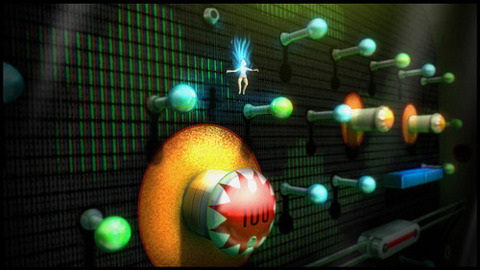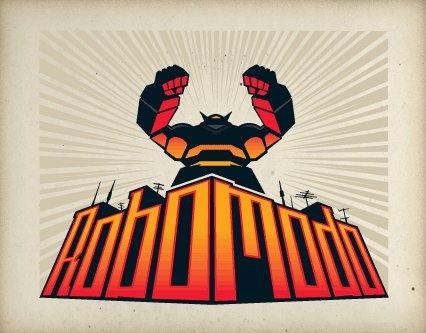Robomodo on the wisdom of crowd funding
President of Tony Hawk: Ride and Shred developer explains why the company has turned to Kickstarter to help finish its Xbox 360 Kinect game Bodoink.
Among established developers, Robomodo is alone in turning to the masses to fund its new game. Last week, the Chicago-based studio behind Tony Hawk: Shred and Tony Hawk: Ride unveiled its next game through a project page on the crowd-funding site Kickstarter.

Set for release on the Xbox 360, Bodoink is an Avatar-enabled, family-friendly take on pinball. By going the Kickstarter route, Robomodo is collecting pledges from users that will be paid out if the overall pledging hits the project's goal (in this case, $35,000). To incentivize pledges, Robomodo is offering a range of goodies to backers, from a sticker for $5 pledges to tours of the developer's offices and credits in the game.
The top four pledge tiers ($1,000, $1,500, $2,500, and $5,000) score donors a spot in the credits with the respective titles of design consultant for the first two, assistant designer, and executive producer. Among other perks, the top four tiers also include a visit to the studio, and the top three include an in-game likeness. As of this afternoon, Bodoink had garnered more than $2,000 in support from 47 backers.
Shortly after the Kickstarter project went live, Robomodo president Josh Tsui spoke with GameSpot about the effort.
GameSpot: Why go the crowd-sourcing route with Bodoink?
Josh Tsui: A lot of it is just an experiment on our end. I've funded a Kickstarter project before and really liked the overall concept of it: people wanting to create something and then really doing it on their own terms by finding an alternative way of funding it. So here, we had a group of designers on the junior side who were doing a lot of prototyping work on side projects, and we thought it would be interesting to see if we could get a game prototyped up to a certain point on our own dime, get it presentable, and then get the last 20-25 percent of it funded through alternative means. Usually, our bread and butter is going through a publisher, showing it the game, and then having it help on the rest of it--which is the way most people do it--but the one trade-off is that you usually have to relinquish some control over it. With Bodoink, we thought, "Why don't we just try to finish it off ourselves?" and thought Kickstarter would be a really fun way of doing things. It's almost like turning funding into a game, so we thought we would give it a try.
GS: Would publishers tend to be very hands on or dictating when it comes to the creative decisions with a game like this?
JT: It really depends on the publisher and how much money it is putting into it. So even for a small game, even a mobile game, if someone is investing [in it], they are going to want a certain amount of control over it. While that is not necessarily going to be a bad thing, we just wanted to see if we could do it completely on our own for this experiment.
GS: How heavily is Robomodo betting on this Kickstarter campaign working?
It's really just a big experiment to see how far we can push crowd funding.
JT: We are always prepared for the worst-case scenario. So if it doesn't go through, we'll figure out some other things to do. It's really just a big experiment to see how far we can push crowd funding. One way or the other, we are going to get the game done. With Kickstarter, we will obviously get the game done faster, but without Kickstarter we will find other means.
GS: So Bodoink will still be made even if the Kickstarter campaign doesn't hit its goal?
JT: Yeah, we feel very strongly about the game itself, otherwise we wouldn't have paid for the prototyping. One point to be clear on: The Kickstarter campaign is to help finish the game. A good 80 percent of the game is pretty much done, so we felt that we would take a little bit of a break at this point, get the campaign going, and then come back to it after the success of the campaign. A giant part of the game that we paid for ourselves is done. So the $35,000 goal is really just to finish off the game.
GS: Do you expect Kickstarter to become a common venue for established independent developers to help get their games made?
JT: That's the experimental part of it that is really exciting. No console game developer has ever tried this before. Most games out there on Kickstarter are PC and mobile games. So, as scary as it sounds, we are kind of pioneering this, and we are hoping we can set a good example for other established independent developers who want to give it a try. In this day and age, everyone should have some options regarding how they want to create their projects.
GS: Did your experience working on Tony Hawk: Ride and Tony Hawk: Shred inform your thinking on Bodoink in regards to working with nontraditional control interfaces and the Kinect?

JT: Yeah, for sure. We went through quite a few years of motion gaming, figuring out the things that did and didn't work. Much like any project, you learn a lot, so designing Bodoink for the Kinect, we gained a lot of knowledge about how people expect to play certain games, how coordinated people are, and things like that. So a lot of that was based on our experience with those previous games.
GS: Do you think we would be doing this interview right now if this had been a regular publisher announcing Bodoink instead of you going the Kickstarter route?
JT: That's a good question. That's probably more of a question for you than for me. I don't know. I think us being the first ones to attempt this through Kickstarter garners some interest in what we are doing. I guess the question back to you is that since you interview a lot of people, what sparked your interest in this project?
GS: It was definitely the Kickstarter hook. There are a ton of neat-looking games that get announced and come through the channel every week, but having the alternative funding story underneath makes the interview more pressing.
JT: It's funny because before we did the campaign, I thought, "I wonder how many people would really be that interested in a game like this because there are a ton of Kinect games out there," but I think the past couple of days has shown that the idea of an established developer using Kickstarter is really unique to people. For us, we just thought it would be a fun thing to do--something to try out--and we've been really surprised by all the attention it has been getting.
GS: So if it does work, the question becomes, "Did it work for the attention that it got due to the novelty of the approach or was it because the business model is just better?"
JT: I don't know. It would probably be a little bit of both. Like I said, it's so new to us, it's going to be hard to predict what the tipping point is at this early stage.
GS: Thanks for the time.
Got a news tip or want to contact us directly? Email news@gamespot.com
Join the conversation